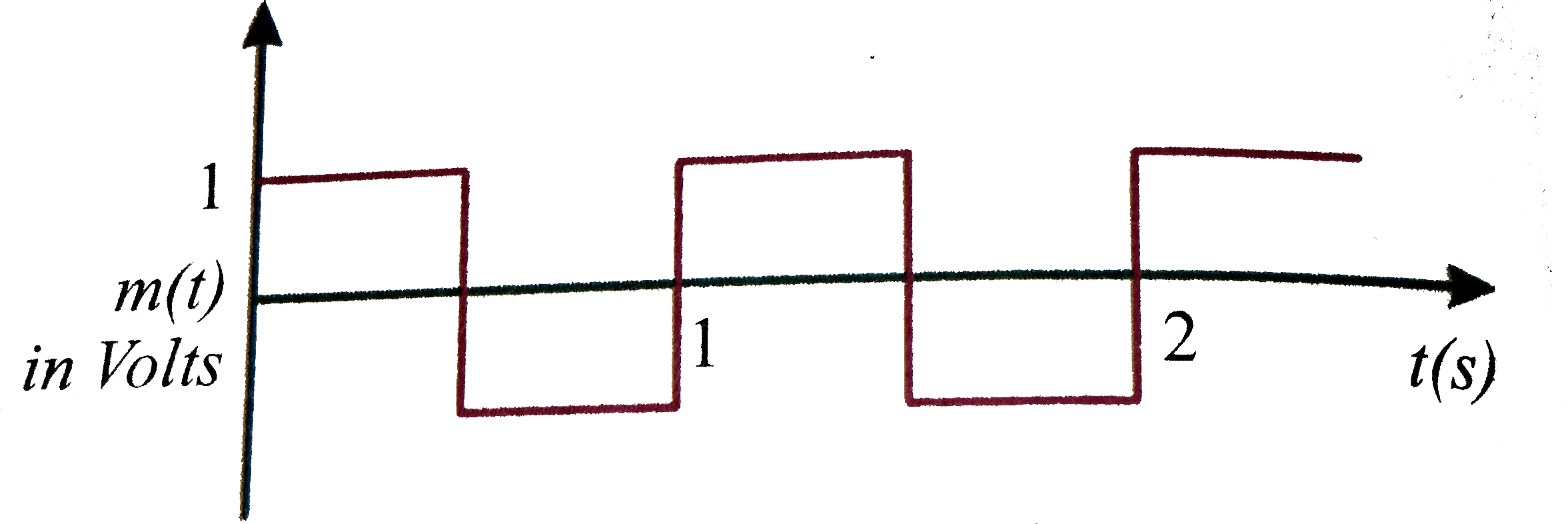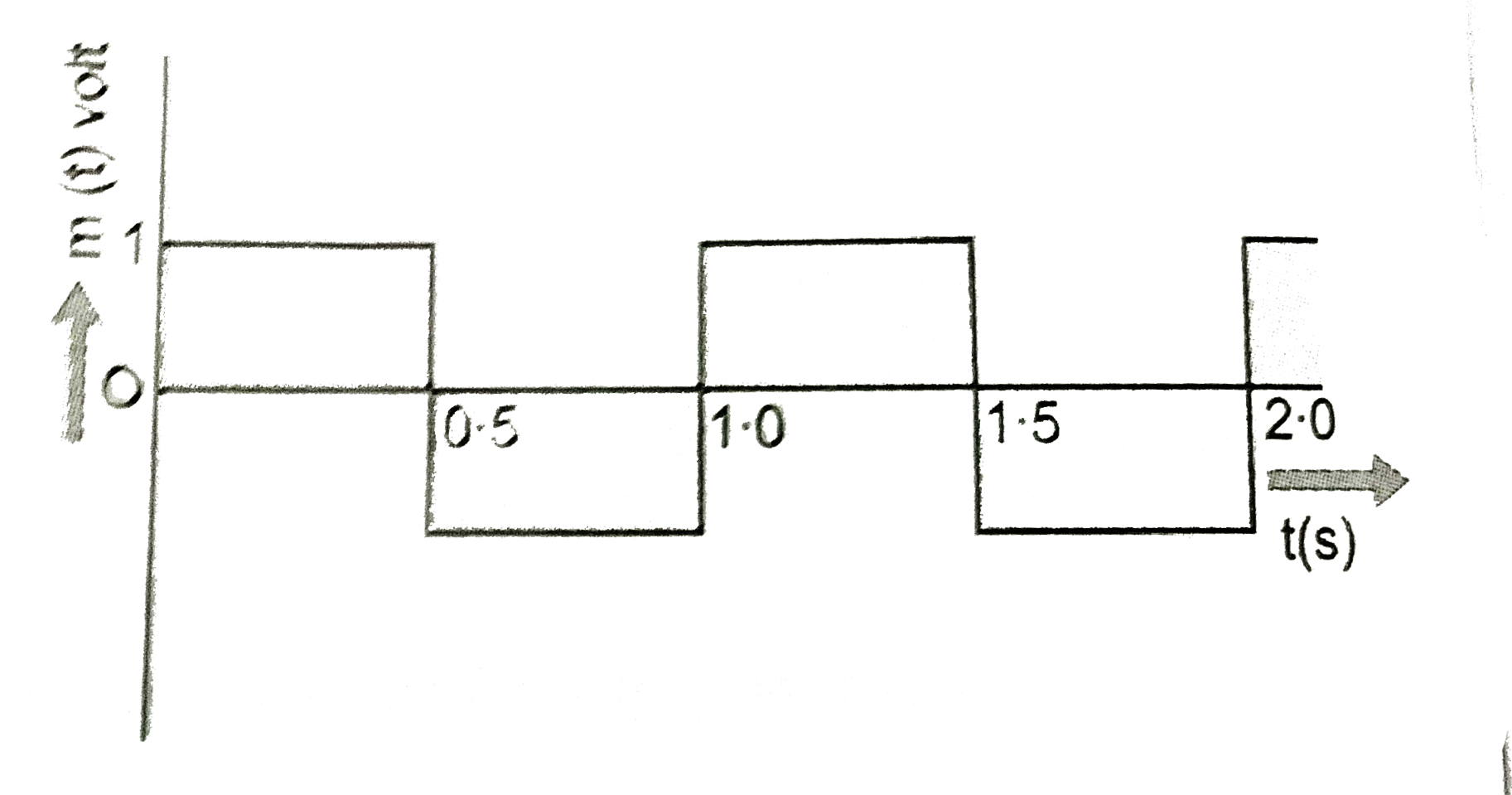The carrier wave is represented by
volt
A modulating signal is a square wave as shown in figure. Determine modulation index.
Modulation index (i) is the ratio of the amplitude of the modulating signal to the amplitude of the carrier wave.
The generalised equaiton of a carrier wave is given below :
The generalised equation of a modulating wave is given below :
Here, is defined as .
On comapring this with the equation of carrier wave and modulating wave, we get :
Amplitude of modulating signal, Am = 2V
Amplitude of carrier wave, Ac = 5V
.

Topper's Solved these Questions
- XII BOARDSBook:XII BOARDS PREVIOUS YEARChapter:XII BOARDSExercise:[SET - III, DELHI BOARD]
Explore 6 Videos
- XII BOARDSBook:XII BOARDS PREVIOUS YEARChapter:XII BOARDSExercise:section A
Explore 5 Videos
- XII BOARDSBook:XII BOARDS PREVIOUS YEARChapter:XII BOARDSExercise:[SET - I]
Explore 32 Videos
- SAMPLE PAPER 2019Book:XII BOARDS PREVIOUS YEARChapter:SAMPLE PAPER 2019Exercise:SECTION D
Explore 6 Videos
Similar Questions
Knowledge Check
A wave is represented as e=10sin(108t+6sin1250t)
then the modulating index isA10B1250C108D6In an amplitude modulator circuit, the carrier wave is given by, C(t)=4sin(20000πt) while modulating signal is given by, m(t)=2sin(2000πt). . The values of modulation index and lower side band frequency are:
A0.3 and 9 kHZB0.5 and 10 kHzC0.4 and 10 kHzD0.5 and 9 kHzA modulating signal is a square wave as shown in figure.

The carrier wave is given by
c(t)=2sin(8πt)volt.
The modulation index isA2B0.75C0.5D1.5
A modulating signal is a square wave is shown in figure. The carrier wave is given by C(t)=2sin(8πt) volt.
(i) Sketch the amplitude modulated wave form.
(ii) What is the modulating index?

View SolutionAn amplitude modulated wave is as shown in the figure. What is the percentage of modulation ?

View SolutionModulation voltage and carrier voltage of a wave is 12 and 4. Find modulation index
View SolutionA modulating signal is a square wave as shown in the figure

The carrier wave is given by.
c(t)=1.33sin(8πt)volts
The modulation index is
View SolutionIn an amplitude modulator circuit the carrier wave is given by C(t)=4sin(2π×107t) while modulating signal is given by m(t)=2sin(2π×105t). Then the bandwidth of the broadcast signal will be
View Solution


